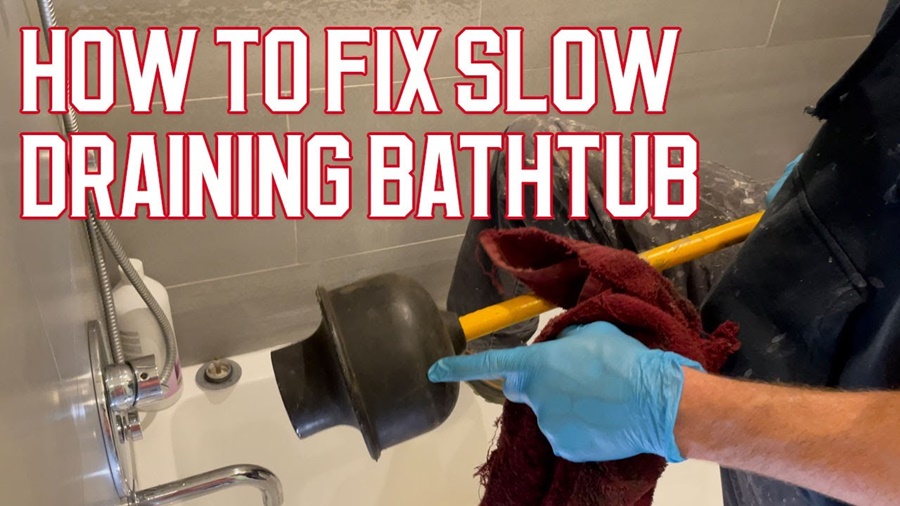A slow-draining bathtub is a common plumbing issue that can quickly become frustrating. Whether it's caused by hair clogs, soap scum, or pipe buildup, there are several ways to fix it yourself before calling a plumber. In this article, we’ll walk you through the causes, tools you'll need, and step-by-step solutions to restore your tub's proper drainage.
Common Causes of a Slow Draining Bathtub
Understanding why your bathtub drains slowly helps you choose the most effective fix. Common culprits include:
Hair buildup: Hair gets caught in the drain and traps other debris.
Soap and scum residue: Soap, shampoo, and conditioner can build up over time.
Mineral deposits: In areas with hard water, mineral buildup can narrow drain pipes.
Foreign objects: Items like shampoo caps or toys can accidentally fall into the drain.
Ventilation issues: Poor air flow in the plumbing system can slow drainage.
Tools and Supplies You May Need
Before you start, gather the following items:
Rubber gloves
Drain snake (or zip-it tool)
Plunger
Baking soda and vinegar
Boiling water
Screwdriver
Bucket or bowl
Old rag or towel
Optional:
Wet/dry vacuum
Chemical drain cleaner (as a last resort)
Step-by-Step Solutions to Fix the Problem
1. Remove the Drain Stopper
Most modern tubs have a stopper that catches hair and debris.
Unscrew or lift out the stopper.
Check for visible clogs and clean thoroughly.
Run water to test the flow.
2. Use Boiling Water to Break Up Gunk
Boiling water is a simple first step.
Boil a kettle or pot of water.
Slowly pour it down the drain in stages.
Wait a few minutes and check if the flow improves.
Tip: Avoid boiling water if you have PVC pipes—it can damage them.
3. Try the Baking Soda and Vinegar Method
This eco-friendly method helps dissolve minor buildup.
Pour ½ cup of baking soda down the drain.
Follow with 1 cup of white vinegar.
Let it fizz for 15–30 minutes.
Flush with hot water.
Repeat this method once or twice if necessary.
4. Use a Drain Snake or Zip-It Tool
Perfect for removing hair clogs stuck deep inside the pipe.
Insert the tool into the drain until you feel resistance.
Twist and pull out the clog.
Repeat a few times, then flush the drain with water.
Note: This method is more effective than a plunger for hair clogs.
5. Plunge the Drain
A plunger can create suction to loosen blockages.
Seal the overflow drain with a wet rag.
Fill the tub with a few inches of water.
Place the plunger over the drain and plunge firmly 10–15 times.
Remove the plunger and check if water drains faster.
6. Check the Overflow Drain (if needed)
If water is still draining slowly, the issue may be deeper in the pipes.
Remove the overflow plate using a screwdriver.
Snake the drain through the overflow pipe.
Reattach everything and test the flow again.
When to Use a Chemical Drain Cleaner (Caution Advised)
Chemical cleaners can dissolve tough clogs but should be used sparingly:
Follow all instructions carefully.
Never mix different chemical cleaners.
Avoid if you’ve already used natural methods.
Frequent use can damage pipes and harm the environment, so use as a last resort.
Preventing Future Clogs
Keep your tub draining well with a few simple habits:
Use a drain cover or hair catcher.
Clean the stopper weekly.
Avoid pouring oils, grease, or thick conditioners down the drain.
Flush with hot water regularly.
Do a baking soda and vinegar treatment monthly.
When to Call a Plumber
If none of these steps work, or if your bathtub is still draining slowly after repeated fixes, it may be time to call a professional. A licensed plumber can:
Use professional-grade tools (like hydro-jetters or motorized snakes).
Identify hidden or complex issues like broken pipes or blocked vents.
Conclusion
Fixing a slow draining bathtub doesn’t always require a plumber. With the right tools and a little patience, you can often solve the problem yourself using basic household items. Routine maintenance and preventive care will help you avoid future clogs and keep your plumbing system in good shape.

